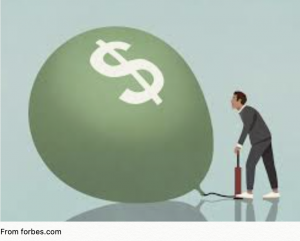Most investors in the stock market lose.
In his book, The Big Short, Michael Lewis states: “The willingness of a Wall Street investment bank to pay me hundreds of thousands of dollars to dispense investment advice to grown-ups remains a mystery to me to this day. I was twenty-four years old, with no experience of, or interest in guessing which stocks and bonds would rise and which would fall. Believe me when I tell you that I hadn’t the first clue. I’d never taken an accounting course, never run a business, never even had savings of my own to manage.”
J. P. Morgan Chase CEO Jaime Diamon had an income of $36 million in 2023!
A general surgeon has an annual income of $400 thousand. A general surgeon needs 90 years to earn what Dimon earns in one. (36 million divided by 400 thousand)
And who pays the Wall Street incomes? Look in the mirror.
To minimize these expenses,
YOU NEED TO LOGIN TO VIEW THE REST OF THE CONTENT OR LEAVE A COMMENT. Please Login. Not a Member? You can now sign up for $12 for a one-year membership. Join Us

